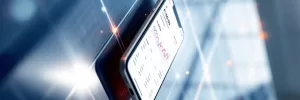Table of Contents
REC Unveils a 430 W Heterojunction Solar Module Boasting 22.2% Efficiency
REC, a Singapore-based PV module manufacturer, introduces its residential solar modules featuring Alpha heterojunction cell technology. Production has commenced at REC’s Industry 4.0 fab in Singapore, with initial shipments scheduled for May 2024 to the US market.
The REC Alpha Pure-2 Series offers four versions, ranging from 400 W to 430 W in power and efficiencies from 20.6% to 22.2%. These modules utilize 132 heterojunction, half-cut monocrystalline solar cells and support a maximum system voltage of 1,000 V.
With open-circuit voltages between 48.5 V and 49.3 V and short-circuit currents from 10.60 A to 10.81 A, all versions share dimensions of 2,237 mm × 1,246 mm × 30 mm and weigh 21.7 kg.
Operating within -40°C to 85°C, the modules exhibit a temperature coefficient of -0.24% per degree Celsius. They feature 4 mm solar glass with anti-reflective treatment, IP68-rated junction box, and anodized aluminum frame.
REC provides a 20-year linear power output guarantee and a 25-year product guarantee. Additionally, the series qualifies for the REC ProTrust warranty package, offering up to 25 years of coverage for product, performance, and labor, with a guaranteed power output of at least 92% in the 25th year.
Maysun Solar also offers HJT solar modules, with an impressive peak efficiency of up to 22.87% and a 30-year product & power warranty. Maysun Solar’s HJT modules maximize energy production, delivering exceptional performance even in challenging environments. These modules are engineered for reliability and longevity, ensuring consistent power generation for years to come.
Experience the pinnacle of solar efficiency with Maysun Solar’s HJT modules. Harness the power of the sun with confidence, knowing you’re investing in a sustainable future with the highest-performing solar technology available.

Efficiency: 21.2-22.3%
Dimensions (L × W × H): 1760 mm × 1098 mm × 30 mm
Weight: 22 kg
Packaging: 36 pcs/pallet, 936 pcs/40'HQ
Warranty: 30-year product and performance guarantee

Efficiency: 21.2% - 22.3%
Dimensions (L × W × H): 1760 mm × 1098 mm × 30 mm
Weight: 22 kg
Packaging: 36 pcs/pallet, 936 pcs/ 40'HQ
Warranty: 30-year product and performance warranty

Efficiency: 21.74%-22.87%
Dimensions (L × W × H): 2383mm × 1303mm × 35mm
Weight: 38.5 kg
Packaging: 31 pcs/pallet, 558 pcs/40'HQ
Warranty: 30-year product and performance warranty
Restrictions on Balcony PV Panels in Some European Countries
Sweden
In 2022, the Swedish Electrical Safety Authority terminated the use of existing solar panel units with plugs in Sweden due to safety concerns. The authority determined them to be insufficiently safe.
Romania
The standard household socket in Romania is rated for a protection power of 3200W (16 amps), effectively allowing systems up to 3200W to be connected. Approval from neighbors and tenants’ associations is required to install photovoltaic panels on balconies. While no permit from the city hall is needed for land installation, installing photovoltaic power generation on balconies may necessitate such a permit, subject to historical or landscape restrictions. Hence, after obtaining consent from neighbors and tenants’ associations, it’s advisable to seek further information from the city hall in your area to determine permit requirements.
Summary: In Romania, plug-and-play photovoltaics face no restrictions but require approval from neighbors and tenants’ associations.If installing plug and play photovoltaic panels on a balcony, please refer to local regulations for specific requirements.
Netherlands
Presently, the NVWA(Netherlands Food and Consumer Product Safety Authority) permits products with a connected power of up to 600W at 230 VAC to enter the market to prevent grid overload. Each grounded socket can connect to a small group of solar panels, with a maximum of 2 panels rated at 600 Wp each. If multiple sockets are present in the meter cupboard, each group can accommodate 1 or 2 solar panels. An additional requirement of self-registration on energieleveren.nl is necessary when installing solar panels independently.
Summary: In the Netherlands, plug-and-play photovoltaics face no restrictions but require self-registration on energieleveren.nl.
France Reaches 20 GW Milestone
France’s Ministry of Ecological Transition has announced that approximately 955 MW of new PV systems were connected to the French grid during the October-December period, bringing the country’s cumulative installed PV capacity to 20.0 GW by the end of December 2023.
Of this capacity, developers installed around 19.3 GW on the French mainland, with the remainder distributed across the nation’s overseas territories and Corsica.
In 2023 alone, France added 3.2 GW of new solar capacity, surpassing the 2.68 GW added in 2022 and the 2.57 GW added in 2021. The total capacity of queued solar projects awaiting grid connection now stands at 14 GW.
Furthermore, approximately 22.4 GW of solar projects are in the queue for grid connection, with around 5.8 GW already covered by preliminary connection agreements.
Notably, regions such as Nouvelle-Aquitaine, Auvergne-Rhône-Alpes, Provence-Alpes-Côte d’Azur, and Grand Est have contributed 48% of the newly connected capacity this year. These regions also boast the highest installed capacities, accounting for over 53% of all cumulative power connected in France as of December 2023.
Installed Capacity Around the World
Global solar photovoltaic (PV) capacity is projected to reach up to 655 gigawatts direct current (GWdc) in the current year, as per BloombergNEF’s (BNEF) 1Q 2024 Global PV Market Outlook, marking a notable increase from approximately 444GWdc recorded in 2023.
China is poised to maintain its dominance in installed capacity in 2024, with an estimated 313.7GWdc, constituting 54.7% of the global solar PV capacity additions for the year. Following China are the United States (40.6GWdc), India (18.1GWdc), Brazil (17GWdc), and Germany (16.5GWdc).
Several European nations are anticipated to ramp up their installed solar PV capacity additions this year, including Spain (7.54GWdc), the Netherlands (5.52GWdc), and Italy (5.25GWdc). Additionally, Japan (5.47GWdc) and South Africa (4.29GWdc) are among the top ten countries in terms of installed solar PV additions.
The study also analyzed the cumulative solar PV capacity of European countries by 2030. Germany is projected to lead the continent with 215GW, followed by Italy and Spain with 79.6GW and 79.3GW, respectively. France (47.6GW), Poland (46.3GW), and the Netherlands (45.7GW) are also expected to contribute significantly to installed solar PV capacity by 2030.
The global solar PV industry witnessed remarkable growth in 2023, with installed capacity increasing from 252GWdc in 2022, representing a year-on-year growth of 76.2%. China accounted for 60.4% of the global installed capacity with an addition of 268GWdc or 216.9GWac last year. The United States added 35.2GWdc, followed by Brazil (16.9GWdc), Germany (14.1GWdc), and India (13.6GWdc).
Brazil’s Rapid Growth in Solar Energy
In a fresh monthly installment for pv magazine, the International Solar Energy Society (ISES) highlights Brazil’s robust renewable energy landscape, boasting over 85% renewable electricity, primarily from hydropower but with swiftly increasing contributions from solar and wind power. With over 2.3 million rooftop PV systems already in operation and an additional 90 million consumer units ripe for solar adoption, Brazil is experiencing rapid solar uptake, propelled by supportive energy policies and affordable PV technology.
In 2023, Brazil witnessed a staggering growth rate of over 1 GW per month in PV adoption, with rooftop installations accounting for 70% of this expansion. The cumulative installed PV capacity surged past 37 GW, reflecting a deployment rate of 60 watts per person per year, capable of doubling the installed capacity every two years.

Driven by favorable net metering regulations, escalating conventional electricity tariffs, and consistent declines in photovoltaic equipment prices, PV has emerged as the second-largest contributor to Brazil’s electricity generation mix. Despite hydroelectricity maintaining dominance with nearly 110 GW installed (49% of total capacity), solar PV ascended to the second position in 2023, accounting for 37 GW (17%), followed by onshore wind (29 GW = 13%). Biomass, primarily sourced from sugarcane bagasse and biogas, added another 17 GW (8%), collectively constituting over 85% of the country’s electricity generation capacity (225 GW).

Both solar PV and wind power now represent the most cost-effective power generation technologies. PV prices in Brazil’s national energy auctions within the regulated electricity market plummeted from over $100/MWh in 2013 to $32/MWh in 2022, with a temporary low in 2019 at slightly over $20/MWh.
The prospective electrification of transport, heating, and industry, alongside green hydrogen production, is poised to drive demand for large-scale PV installations in the coming years. Leveraging its well-established energy market, abundant solar and wind resources, and proximity to export markets in Europe, Brazil is anticipated to emerge as a global leader in producing low-cost hydrogen and ammonia.
Iliad Group Signs 90MW Solar PPAs Across Europe
French telecommunications firm iliad Group has recently finalized agreements for solar power purchase across Europe, totaling 90MW in capacity.
The agreements, signed with French utility Engie and Norwegian energy company Statkraft, encompass three solar PV projects located in France, Italy, and Poland, collectively generating 116.7GWh of electricity annually.
In France, iliad secured a 15-year PPA with Engie for a 25.6MW solar plant in Saint-Gemme. Additionally, iliad partnered with Statkraft for PPAs in central Italy and northwestern Poland, both spanning ten years and commencing on January 1, 2025. The Italian plant boasts a capacity of 27.9MW, while the Polish facility will generate 36MW.
The Italian solar farm will be operated by independent power producer (IPP) Sonnedix, while the Polish counterpart will be managed by solar developer Better Energy. Notably, Better Energy and Statkraft recently inked PPAs for four solar installations in Poland with a combined capacity of 212MW.
These solar PPAs mark a significant step for iliad Group’s renewable energy commitments, aligning with its goal to source at least half of its electricity demand in Poland and Italy through PPAs by 2035, and 20% in France.
Upon the commencement of operations in 2025, iliad’s renewable electricity consumption through PPAs will rise to 13%. The growing interest in PPAs, particularly corporate agreements, is evident in Europe, with a recent report by analyst firm BloombergNEF indicating a 75% increase from 2022 to 2023, reaching 15.4GW.
Reference:
https://www.pv-magazine.com/2024/03/01/rec-launches-430-w-heterojunction-solar-module-with-22-2-efficiency/
https://www.solcellsofferter.se/solceller-med-stickpropp/
https://greensolar-partner.com/ro/faq
https://emperio.ro/panouri-fotovoltaice-pe-balcon-autorizatii-economii-costuri/
https://www.veron.nl/nieuws/zonnepanelen-met-stekker-nen1010/
https://www.verbouwkosten.com/zonnepanelen/in-het-stopcontact/
https://supersola.com/nadelen-zonnepanelen-met-stekker/
https://www.pv-magazine.com/2024/02/28/france-hits-20-gw-milestone/
https://www.pv-tech.org/bnef-global-solar-additions-655gwdc-in-2024/#
https://www.pv-magazine.com/2024/02/20/pv-and-prices-the-fast-uptake-of-solar-in-brazil/
https://www.pv-tech.org/french-telecoms-firm-iliad-group-inks-90mw-solar-ppas-across-europe/

Empowering Factories with Solar Energy A Strategic Tool for Controlling Production Electricity Costs
Commercial and industrial solar is becoming a key solution for factories to reduce electricity costs and hedge against price fluctuations. This article systematically analyzes its deployment models, cost advantages, and sustainable value pathways.

How Businesses Can Offset Carbon Taxes with Solar Power
This article analyzes the latest carbon tax policies and photovoltaic deduction strategies, helping European businesses legally reduce taxes, increase profits through solar investment, and achieve a win-win situation for both economy and environment.

Forecast and Response: Seizing the Next Decade’s Growth Dividend in Europe’s Commercial and Industrial Photovoltaics Market
Maysun Solar analyzes the growth trends of commercial and industrial photovoltaics in Europe over the next ten years, from policies and ESG to technological innovation, helping companies seize the initiative in the energy transition.

How to Calculate Solar System ROI and Optimize Long-Term Returns?
Solar power is becoming a key solution for businesses to reduce costs and improve efficiency. Accurately calculating ROI and optimizing long-term returns are essential to maximizing investment value.

Will Agrivoltaics Affect Crop Growth?
Agrivoltaics combines solar energy and agriculture to reduce up to 700 tons of CO₂ per MW, improve water use, and boost crop growth for sustainable farming.

6.5 Billion Loss Hits Photovoltaics: Reshaping or Elimination?
In 2025, the photovoltaic market may see a turnaround as some companies take early action. A €6.5 billion loss is driving businesses to explore new growth areas like energy storage and hydrogen. Which giants will break through? Industry transformation is accelerating!



